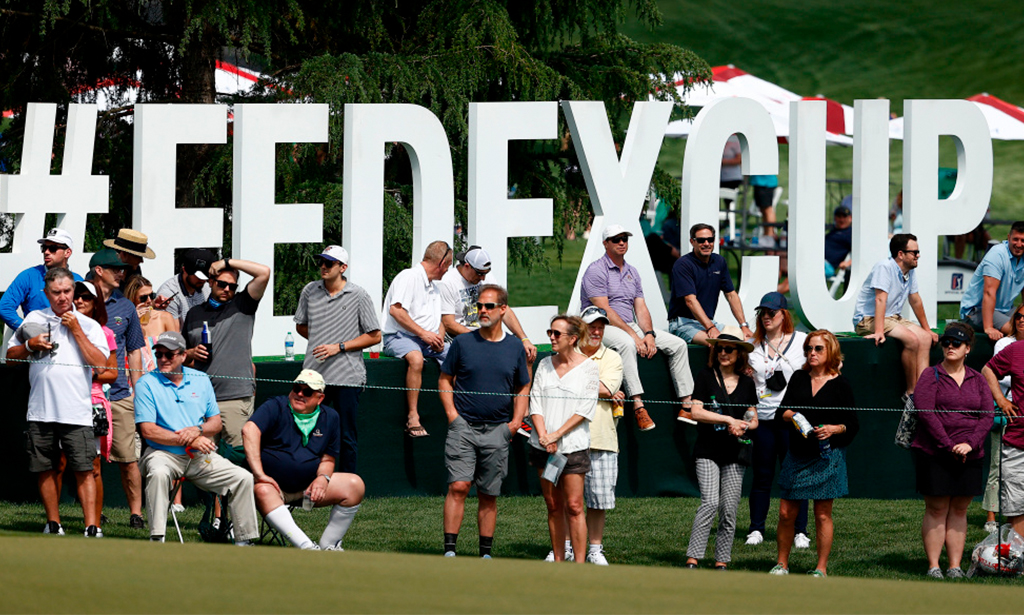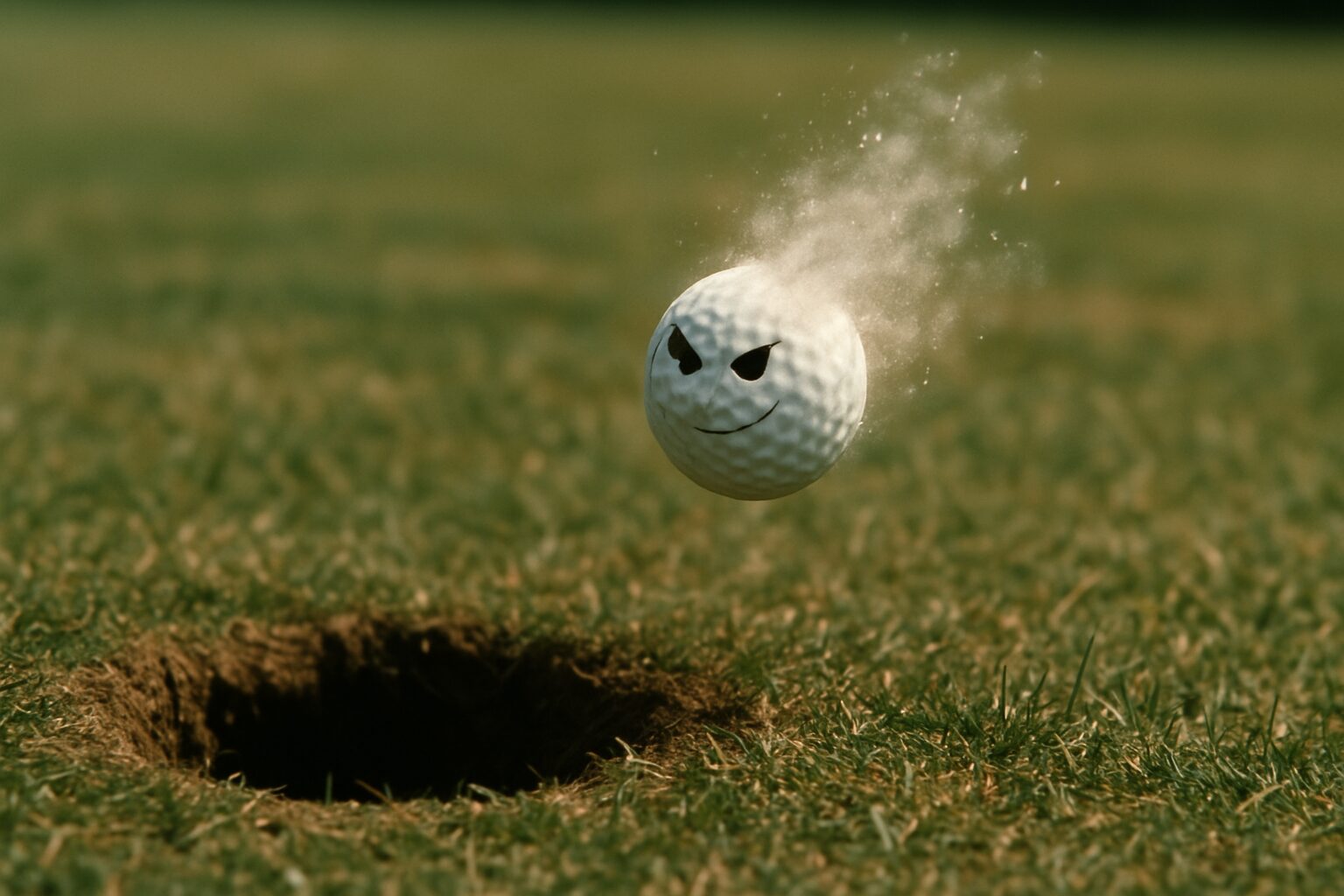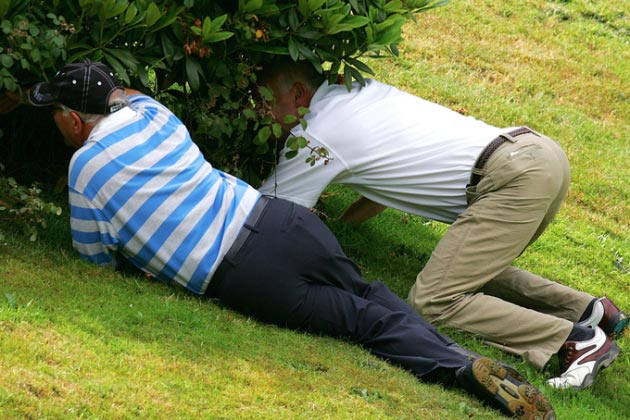Blog
FedEx Standings: Who’s on the Bubble & Who We are Shocked Didn’t Make the Cut

The BMW Championship was full of some truly great golf. Bryson almost achieved the rarely seen 59, missing it my one shot. Not a bad score for the leader of most of the tournament, but we were all hoping to see him sink that putt.
Now, the Tour Championship is all set with the top 30 players in the FedEx Cup standings. Competition is fierce with an eye-popping $15 million for the top spot. Of course, last place doesn’t get a bad payout either fetching a cool $395,000. All 30 golfers will also receive exemptions that could come in handy down the line.
Here are some golfers who were close to the bubble:
1. Daniel Berger
Winning the AT&T Pebble Beach Pro-Am in January, Daniel Berger looked to be one who would manage to grab one of the top spots. He finished the BMW Championship at 13 under which tied him for 26th in the tournament.
2. Sergio Garcia
Sergio Garcia played well over the weekend and finished tied for 6th place at 20-under. Considering he was number 44 in the standings before last week’s tournament, his performance gave him and impressive bump up to number 28.

3. Billy Horschel
Horschel wrapped up his final round at Caves Valley with no bogeys and 5-under par. He is projected to lock in the 29th on the leaderboard. He was the 2014 FedEx champion, so he is likely to put up a fight to recapture the title.
4. Erik van Rooyen
Van Rooyen won his first PGA Tour title at the beginning of this month, but don’t count him out of the top 30. With no bogeys in his final round in the BMW Championship and ended in 5th place for a 20-under. He is currently projected to come in 27th in the standings.

————————————————————————————————————–
We are Surprised These Golfers Didn’t Make it to the FedEx Playoffs
Playoffs kicked off a couple of weeks ago and there are a few familiar faces that didn’t make the cut. While this year looked a little different due to pandemic restrictions causing the PGA Tour to reschedule thirteen events in 2020, we are still a little surprised we won’t be seeing them competing this year.
1. Henrik Stenson
Playing just five qualifying events during his time on the Tour, Stenson may not be the most shocking name on this list. He does play on both the PGA and European Tours so his FedEx Cup standings have taken a hit as a result. He was at number 201 at the beginning of playoffs, which gave him a longshot at the FedEx Cup this year.
2. Jim Furyk
At 50 years old, Furyk is a Ryder Cup Captain and still a force to be reckoned with on the PGA Tour Champions. He is also still technically defending runner up at the Players championship due to some of the scheduling changes, so we are a little disappointed he didn’t get a shot at some more points.
3. Matt Wallace
Last year, Wallace was near the top 25 in the standings after having an incredible performance to tie for third at the 2019 PGA Championship. More recently, he finished tied for 4th at the Memorial Tournament, but it wasn’t enough for him to make the cutoff for playoffs.
4. Charl Schwartzel
Back in 2020, Schwartzel grabbed two top-5 finishes making him the most shocking player who didn’t make the cut this year. However, he did have some disappointments by missing another seven cuts out of ten events.
Blog
On the Importance of Not Caring: A Guide to Lowering Your Score
Worry causes many issues. When you are able to just stop, a wonderful thing happens. Follow this guide from Ty Webb to learn more.

They say golf is a game of mental fortitude, of unwavering focus, of meticulous planning. They say you must visualize the shot, commit to the swing, and execute with precision. And to them, I say, “Hogwash!” Or perhaps, “A flute with no holes, is not a flute. A donut with no hole, is a Danish.” Because, my friends, the true secret to lowering your score, to achieving that elusive state of golfing nirvana, is to simply not care. Not one whit. Not a single, solitary damn.
Think about it. When do you hit your best shots? Is it when you’re agonizing over every blade of grass, every gust of wind, every microscopic imperfection on the green? Or is it when you’re distracted, perhaps by a particularly interesting cloud formation, or the existential dilemma of whether to order a hot dog or a chili dog at the turn? It’s the latter, isn’t it? Because when you stop caring, you stop thinking. And when you stop thinking, you start playing golf.
The golf swing, in its purest form, is an act of instinct, a fluid motion unburdened by the shackles of conscious thought. But we, in our infinite human capacity for self-sabotage, insist on overthinking it. We analyze, we dissect, we intellectualize. We turn a simple act of hitting a ball into a complex mathematical equation, a philosophical treatise on the meaning of spin and trajectory. And what is the result? A hooked drive, a chunked iron, a three-putt that would make a novice weep.
But when you don’t care, a magical transformation occurs. The tension drains from your shoulders, the grip loosens, the mind clears. You swing, not with intent, but with a blissful indifference. The ball, sensing your newfound detachment, responds in kind. It soars, it draws, it fades, it lands precisely where it was always meant to be. It’s as if the ball itself is saying, “Finally! Someone who understands me! Someone who isn’t trying to force me into submission!”
Of course, this doesn’t mean you should actively try to hit bad shots. That would be caring, in its own twisted way. No, the art of not caring is a subtle one. It’s a state of detached engagement, a Zen-like acceptance of whatever the golf course throws at you. A bad bounce? Who cares. A missed putt? Such is life. A lost ball? Perhaps it’s off on a grand adventure, a journey of self-discovery. And in that detachment, in that blissful indifference, you will find a freedom that transcends the scorecard.
So, the next time you step onto the tee, take a deep breath. Let go of your expectations, your desires, your desperate need for perfection. Embrace the chaos. Embrace the absurdity. And most importantly, embrace the profound, liberating power of not caring. For in the gentle art of indifference, you will find not only a lower score, but a deeper, more meaningful connection to the game. Or at least, a more enjoyable round.
Blog
The Art of the Unsolicited Golf Tip: How to Annoy Your Playing Partners with Wisdom

There’s a certain breed of golfer, a truly special individual, who believes that every swing, every putt, every moment on the course is an opportunity for unsolicited advice. They are the self-appointed gurus of the green, the unsolicited senseis of the sand trap. And while most people recoil from such an individual, I, Ty Webb, find a certain perverse charm in their relentless, often misguided, generosity. After all, what is golf if not a canvas for human folly, painted with strokes of well-intentioned, yet utterly useless, wisdom?
Consider the scenario: your playing partner, a man (or woman) of quiet desperation, is about to address the ball. Their brow is furrowed, their stance is tentative, their very soul is screaming for a moment of peace. And then, from the depths of your profound, albeit unrequested, knowledge, you unleash it: “Keep your head down!” Or, “Slow backswing!” Or, my personal favorite, delivered with a knowing wink, “Be the ball.” The effect is instantaneous. A subtle flinch. A barely perceptible sigh. The swing, already fraught with anxiety, becomes a tortured ballet of self-doubt. The ball, inevitably, finds its way into the deepest, darkest rough.
And that, my friends, is the art. The beauty of the unsolicited golf tip lies not in its efficacy, but in its disruption. It’s a gentle reminder that even in the serene confines of the golf course, chaos lurks. It’s a subtle assertion of dominance, a playful jab at the fragile ego of your fellow golfer. It’s a way of saying, without actually saying it, “I know more than you, even if I don’t.”
Of course, there are rules to this art. Never offer a tip when someone is actually asking for one; that would be far too helpful, and thus, entirely counterproductive. Always deliver your wisdom with an air of profound nonchalance, as if the secret to a perfect swing has just casually occurred to you while contemplating the existential dread of a missed putt. And most importantly, never, ever, acknowledge the catastrophic results of your advice. A shrug, a thoughtful nod, perhaps a mumbled, “Well, that’s golf,” is all that’s required.
So, the next time you’re on the course, and you see a fellow golfer struggling, resist the urge to be genuinely helpful. Instead, embrace the art of the unsolicited golf tip. For in the gentle torment of your playing partners, you will find a profound, if slightly mischievous, joy. And who knows, perhaps in their frustration, they will, inadvertently, discover their own path to enlightenment. Or at least, a new appreciation for silence.
Blog
Why Your Golf Balls Disappear (and It’s Not the Gophers)

Ah, the vanishing golf ball. A phenomenon as old as the game itself, and one that has baffled, frustrated, and occasionally driven golfers to the brink of madness for centuries. Most theories involve gophers, those furry, subterranean saboteurs with an insatiable appetite for Titleists. Or perhaps a particularly aggressive squirrel, or a flock of unusually organized crows. But I, Ty Webb, have delved deeper into this mystery, and I can assure you, the truth is far more profound, and far more amusing.
Consider, if you will, the golf ball itself. A small, dimpled sphere, designed for one purpose: to be struck with great force and sent hurtling through the air. A life of constant abuse, of being smacked, sliced, and occasionally submerged in murky ponds. Is it any wonder, then, that some of these brave little spheres simply decide they’ve had enough? They yearn for freedom, for a life beyond the confines of the fairway. They dream of rolling unencumbered through fields of wildflowers, or perhaps, for the more adventurous among them, a quiet retirement in the depths of a particularly challenging water hazard.
I’ve seen it happen, you know. A perfectly struck shot, soaring through the air, destined for glory. And then, poof. Gone. Not a trace. No splash, no rustle in the bushes, just an empty space where a golf ball once was. It’s not a gopher, my friends. It’s an escape. A liberation. That golf ball, in its infinite wisdom, has chosen a different path. It has decided that its destiny lies not in the bottom of a cup, but in the boundless expanse of the unknown.

And who are we to judge? We, who are so obsessed with control, with precision, with the rigid rules of the game. Perhaps the golf ball, in its spontaneous disappearance, is teaching us a valuable lesson about letting go. About embracing the unexpected. About the inherent futility of trying to dictate the trajectory of a small, white sphere that clearly has a mind of its own.
So, the next time your golf ball vanishes into thin air, don’t curse the gophers. Don’t blame your swing. Instead, offer a silent salute to that brave little sphere, wherever it may be. For it has achieved what many of us can only dream of: true freedom. And who knows, perhaps one day, it will return, laden with tales of its adventures, ready to impart some profound, dimpled wisdom upon us all.
-

 Product Review6 years ago
Product Review6 years agoThe Perfect Practice Putting Mat Review by Jason Tenzer
-

 Blog4 years ago
Blog4 years agoLoophole Rule Offers PGA Tour Pros a Mulligan
-

 Blog4 years ago
Blog4 years ago2021 Buyer’s Guide: The Top 10 Value Golf Balls For Distance & Feel
-

 Blog4 years ago
Blog4 years agoGolf Marriage Counselor
-

 Blog6 years ago
Blog6 years ago9 Biggest Chokes Of The Past Decade
-

 Product Review6 years ago
Product Review6 years agoTHE ADJUSTABLE IRONS: WALKING STICKS GOLF CLUBS
-

 Blog4 years ago
Blog4 years agoWhat Your Golf Clubs Say About You
-

 Equipment6 years ago
Equipment6 years agoOHK Sports Interview by Jason Tenzer


















